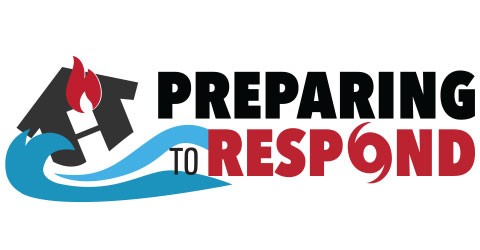Learn the secrets to success writing insurance claims with the Xactimate estimating platform. The insurance claims estimating world can feel like a wandering in the dessert for restoration professionals. The frustration with the guidelines of program work and having to be reviewed by third party administrators (TPAs) can bring mitigation and construction estimators to a point where they feel lost and leaderless. Anyone who manages projects within the insurance claims industry must familiarize themselves with reading and writing Xactimate estimates. For those just beginning their journey in estimating insurance claims, you will find our Three R’s of Mastering Xactimate for Beginners to be a helpful baseline for success. The cloud of mystery that surrounds the stone tablets of this industry standard may scare and confuse many, but with the help of these ten commandments for Xactimate mastery you may find that you can achieve success. Estimating with Xactimate Commandment OneThou shalt sketch accurately. Regardless of the tools that you use, make sure that you get your sketch right. An accurate sketch is the key to creating a solid Xactimate estimate. Sketching from the site is one of the best ways to ensure you get odd corners and turns in a unique layout accurate as well as capture all of your line items. Second best is utilizing sketching programs or a good graph notebook. If you are new to sketching for construction estimates, property restoration or Xactimate, check out this video on the foundations of a good diagram. Estimating with Xactimate Commandment TwoThou cannot take too many photos. For those who started in the industry when we had to print photos or save them on 3.5 in floppy disks, there may be some hesitation to take too many photos. With modern digital technology this is no longer true. The more photos that you take the better. Always take photos of the front of loss, source, shots from all corners of affected rooms, affected materials, equipment and any unique components of the claim. Learn what carriers and adjusters are looking for as it is a terrible waste of time to have to run back out to a project just for one shot to justify a key line item. Estimating with Xactimate Commandment ThreeThou shalt label they photos descriptively. Common descriptions should include the room name and what is being represented with the photograph such as “Kitchen floor damage” or “Living room ceiling affected”. Carriers are often requesting that photos be uploaded in relationship to the sequence of rooms in the sketch, this can be easily done by dragging photos into the rooms when uploading into Xactimate. Estimating with Xactimate Commandment FourThou shalt utilize thy F9 notes. F9 notes can be used for formatting but breaking up large sections of line items into categories that make the estimate easier to read for reviewers, adjusters and your production teams. F9 notes can be used to describe how a line item is being utilized, for example DRY LF may have an F9 note of “Repair flood cuts for common wall to bathroom” especially if there is another drywall line item in the room that may be for the ceiling or separate section of wall. If you ever utilized a labor (LAB) line item you must understand that it is going to be questioned and should have an ample F9 note, photographic support for the scope being requested and best to have the designation as “approved by adjuster,” assuming that you have already discussed it with them. Communication is key, utilize this simple function. Estimating with Xactimate Commandment FiveThou shalt document your initial findings. Whether it’s a 12 hour update for a mitigation claim or a loss narrative for a repairs claim, you need to communicate the conditions you have found once you have completed your inspection. For mitigation projects you are communicating the site conditions, source and drying plan. For repairs projects you are confirming the site conditions and outlining the scope of work that you are estimating for. Samples of what should be covered in the twelve hour update as well as the loss narrative for Xactanalysis include: Sample 12 hour update for mitigation projects in Xactimate:
Sample loss narrative for repairs projects in Xactimate
Estimating with Xactimate Commandment SixThou shalt update thy adjuster in real time and document consistently. One of the keys to success for any organization or project management system is communication. A key principle for communication in the insurance claim industry is no surprises. Utilize email, text, phone calls and third-party programs such as Xactanalysis to communicate consistently and clearly with all parties. While some adjusters may have you wait until the end of a claim to compose all of your supplements and changes, you want to make sure that you aren’t waiting until then to communicate and acquire some form of written approval. You want to build relationships with adjusters and claims administrators and communication is a means to making their job easier by not surprising them with alterations to the plans previously agreed to. Estimating with Xactimate Commandment SevenThou shalt learn thy carriers guidelines. While it is impossible to remember all of them unless you are able to specialize with specific carriers, it is important to know the key rejection line items. Pay attention to what you are getting rejected for. Try to not repeat the same mistakes with the same carriers. Every carrier has their general rules as well as their idiosyncrasies. For example one carrier will want contents as CON LAB and another will want to see it as CON ROOM. It should only take one rejection for you to understand and remember which carrier prefers the line item one way or the other. Estimating with Xactimate Commandment EightThou shalt know thy line items – apply thyself to understand the process of line item approvals. If you do not want to be constantly frustrated by rejections you must quickly learn which line items will get rejected by reviewers or will require adjuster approval. When working with third party administrators (TPAs) you will have to work through layers of review and approvals based upon insurance carrier guidelines. If you have a scope of work that falls outside of the norm you will need to get in communication with the adjuster to discuss how they would like that scope of work broken down. A scope and line items that may not pass through the normal review process can be overridden if there is ample explanation through F9 notes, photos and the designation that this has been “approved by adjuster”. Memorization of line items can help boost Xactimate estimating success and expedience
Estimating with Xactimate Commandment NineThou shalt know thy line items – thou shalt understand thy line item descriptions. When you start writing estimates in Xactimate you need to take some time to familiarize yourself with what is and isn’t in a line item. As a general rule, most carriers do not want you to utilize labor (LAB) line items as in theory everything that needs to be done should be covered in a line item scope of work. For those items that are out of the ordinary you need to ensure that there isn’t an Xactimate line item that covers the work you are requesting labor for. Also, ensure that you aren’t duplicating a scope of work that is already covered in the line item while also ensuring that you aren’t cutting yourself short by missing items that are omitted from the line item description. Estimating with Xactimate Commandment TenThou shalt learn to master the tri-fecta of service, expedience and accuracy. Restoration creates the challenge of getting in and getting out expediently while providing a quality service and communicating with multiple parties. When the scope of work falls outside of the timeline requirements be sure to communicate and update frequently. Restoration professionals have to be skilled in the construction and mitigation trades, must be able to provide a high level of customer service which is grounded in communication and are required to be technologically proficient to utilize the industry tools. Insurance claims estimating mastery starts with knowing the guidelines of XactimateWhen Moses came down from Mount Sinai with the two stone tablets, there were questions and fear, but there were also some clear directives. Xactimate and program guidelines generate similar emotions but one cannot argue that there are keys to success when working with the estimating software. You can argue all you want about who gave the directives, who is interpreting the guidelines and whether the system is fair, but you also had better apply your energy to learning Xatimate’s keys to success. If you are just starting out in your estimating journey, you may find our Three R’s of Mastering Xactimate for Beginners to be helpful. Insurance claims are subject to some level of interpretation so mastering the tools of the trade is essential to achieving success with the process. Contact us for coaching and consultation with estimating, project management and process improvement.
1 Comment
 Can't we all just get along? Can't we all just get along? Originally published as Shared Spaces: Shaking Up The Restoration In-Office Experience February 24, 2016 by Restoration & Remediation Magazine (R&R) By Jon Isaacson Could restoration companies benefit from a non-traditional work space? I started my career in property restoration in a shared office with myself, my manager and space designated for our crew to meet and interact. At most places I have worked since, the more normative office is laid out in designated segments of isolation. While I don't dismiss the value of personal space and enjoy my privacy as much as anyone, I have found the value of shared spaced and have worked to create open work space in every team that I have supervised. Shared Space Equals Shared Experiences When you share an office, you can feel the pulse of the team. You hear your team, even when you are not conversing with them directly, you are hearing their interactions. While there are times when the noise level has to be managed, when you hire people who are respectful they will likely already understand the dynamics of time and place in an open space. For our teams the benefits of a communal office within our department has far outweighed the perceived negatives. Imposing an open office on people who are not ready for it is a recipe for disaster. Transitioning to a shared space is made much more seamless when you have people who enjoy working together and/or you hire people who understand the culture. Implementing an open office is not of any benefit if it does not reflect your culture or add value to your team. Open Space Equals Open Communication Creating a shared space has allowed us to more readily share information at all levels of our department. Having our crew come into our office in the morning creates a natural opportunity to discuss the day's assignments. When the crew returns in the evening, we can debrief and discuss needs for the following day. These organic connection points throughout the day have increased our interactions at professional and personal levels. Combining our open space with making our workloads visible has helped us to elevate our clarity across our team interactions. Your office is your second home. Arguably, you spend more time in your work space with your work peeps than with your actual family, so making it an enjoyable and functional environment should be a priority. When drafting the plan for your work space - whether open, traditional or some other system with a fancy name - think about the following:
For our department, we have hired people who bring value to the team, we have been protective of the culture that we have developed and we have enjoyed the benefits of a shared work space.  Communication lines need to be clear and direct Communication lines need to be clear and direct Originally published as Peeling Back the Five Layers of in a Restoration Business June 22, 2016 in Restoration & Remediation Magazine (R&R) By Jon Isaacson How many times a day does the phone ring and it's a customer calling wondering when your organization is going to get the work done, when the crew is going to arrive or what the schedule is? Is it more often than it should be? Who holds the responsibility in the organization to communicate these details to your customers? Before we start to point fingers, let's follow the sequence of information. Organization Layer 1 Our customer called the office because they have not been communicated with, the last person at the job was an employee who was there over 48 hours ago. We ask, why didn't that employee tell the customer what the next sequence of work was going to be? At the conclusion of our investigation into Layer 1, we are ready for a heated discussion with our lead technician assigned to the project. We say our organization values our customers, but we are not demonstrating this with clear and consistent communication. Organization Layer 2 We track down the responsible employee who was last at our under-informed customer's home and it turns out that employee didn't communicate scheduling details with the customer because that employee was not provided with sufficient information to intelligently pass along to our customer. While we were prepared to discipline this employee as the source of miscommunication, we discover that there are additional parties involved with this malady - there are more layers to investigate. In addition to this discovery, our employee brings to our attention that they regularly don't know what they are doing for the day when they show up for work. As an organization we would say we value our customers, we also would say that we value our employees, we may even have these values posted on our walls, and yet we are not communicating with clarity or consistency to either party. Organization Layer 3 As a manager, the frustration is turning is now bordering on anger. We march forward to discuss these disturbing findings from the previous two layers with our employee's supervisor. Rather than uncovering the head of the snake, we reveal that our production supervisor hasn't been clearly or consistently communicating scheduling or work details because they haven't been receiving them from their supervisor (in most restoration companies we are now at the estimator level/layer of the org chart). Our production team hasn't been communicating in the manner we would expect with customers or employees because they are flying by the seat of their pants with the work being handed down to them. We are uncovering that our issues are as much with systems as they are with persons. Organization Layer 4 Each layer has revealed an additional layer, managers who are willing to investigate may now be fearful of encountering additional worm holes within the system. Not us, we continue our investigation and gather the estimators into the conference room for the final tongue lashings. As a related side note, everyone serving in the 24/7 emergency response industry knows that work comes in at all times, in all sizes and has no mercy with regards to holidays or special occasions, yet just because we service emergencies does not mean that we shouldn't have as clear a process that we can develop. Our management team unravels the layers of investigation stemming from the call received by our confused customer, the estimators relate their challenges in working with how the work flow is initiated. Work flow with relationship to how assignments are handed out, especially when our organization is serving the needs of clients who are all in various degrees of distress, is essential to setting our teams up for success. We are faced with a reality that our response process may be broken or at least damaged and needs some TLC in order for our team as a whole to be successful. If we value our customers and we value our employees, we need a system that communicates with clarity and consistency. Organization Layer 5 The investigation goes full circle and we have determined that there are issues related to a lack clarity and consistency in the work flow process which is affecting us at every level. In order to fix this, we will need to address the system from top to bottom and will need every layer of our organization to be invested in the restoration of our process. Communication is our organization showing our customers that we value them. Clarity and consistency is our organization showing our employees that we value them. Scheduling is the result of a commitment to preparation for success and a successful scheduling system enables everyone on our team to communicate with clarity as well as consistency. Our efforts to create a system of clear and consistent communication from start (receiving a request for service) to completion (creating a happy customer) will require intentional efforts as a workable schedule will not create itself. The reason we spent all these words (all this time) just to establish the problem, is that while scheduling should be the foundation for any service organization, the commitment to clarity and consistency is rather uncommon. Often we get so wrapped up in the emergency nature of our business, that we forget to build around our values. When a customer calls with a valid complaint, this is an opportunity for some honest organizational evaluation as well as a wake up call for action. What Must We Do? Property restoration as an industry requires multiple aspects of technical knowledge in our fields of multiple service offerings as well as communication of multiple work details across multiple data entry points to keep multiple parties involved with a given loss updated on work progress. Clarity At The Point Of Work Intake Do we have a consistent process for gathering as much information as we can when a call for service comes in? Regardless of who answers the phone, we should have a clear and consistent process for acquiring the details necessary to set our teams up for success. When we answer the phone, we communicate to our customers that we care by getting the details right and we communicate to our service employees that we care by providing them with the details they need to start a project off with good information. Clarity At The Point of Work Initiation The reality In emergency response to disasters, work comes in at all hours of the day as pipes break, fires occur or a host of other scenarios play out for homes and businesses in our area. Because of these contingencies, our schedules can never be fixed to the point that they cannot change at a moments notice. As such we always have to build into our schedules a certain amount of flexibility. Our production managers have to be aware that they cannot send all of our resources to the furthest reaches of our service territory and still be able to reallocate personnel to respond in the middle of the day to a customer that is in need of emergency services. We have to be honest with our customers about what we can and cannot do as we have to fulfill our prior commitments while evaluating our abilities to service new ones. Being busy is a good problem for any organization, this usually means we are growing, but being chaotic is unhealthy and will lead to failure. Clarity Within The Organization Establishing a visible joint schedule for our organization is an essential means of assisting all of our teams to prepare for the day ahead while enabling us to update our customers with our strategy for keeping their project moving forward (read our previous article about visible schedules HERE). Our people deserve to know, as best as management is able to communicate, what their assignment will be for the following 24 hour period so that they can mentally prepare and ready their teams to respond to our customers needs. Our customers deserve to have consistent communication of job progress and to know when strangers are going to be in their home. Find the medium that works for your team, but make the schedule accessible and visible by all in the organization as this creates great accountability through transparency. When the concerned customer calls to ask about their job, the person answering the phone should be able to say, "Let me pull up the schedule. Yes, I can see we are scheduled to be at your home between 11am and 12pm today, would you like me to get ahold of the technician who will be responding or the project manager assigned to your loss?" Clarity Within Your Work Communication For our team, we inherited a system of carbon copies for printed work orders (or field scopes). Carbon copies served a purpose at some point in time...a point in time right around when the dinosaurs became extinct. We were able to adapt our hand printed work orders (penmanship is a barrier to clarity) into a Microsoft Excel format so that they could be typed - allowing us to ensure they were readable and savable which allows us to track and reference these forms. The first order of the work order is that in order to be effective the work order must be legible, must have sufficient details and must be executable by the team members assigned to the tasks. Notes on a piece of paper are useless unless those composing the document have been intentional to be clear with those who will be touching the project. As our system for work orders evolved we wanted our system to be easier to input and more readily shareable by our entire organization. We needed a medium that would allow team leaders to communicate effectively with team members the details of work scopes and resource allocation. We looked into mobile and desktop applications as well as cloud based systems, most of the ones that were the most appealing were also fairly expensive. We experimented with free versions of popular systems but found many of them to be a time consuming venture that did not have the return that we needed, especially with our shorter term projects. Our schedule needed to show management where our fleet would be assigned, which personnel would be responding to an assignment and what production tools would accompany that crew to complete their tasks. We found that some of the best resource were those that we were already utilizing (see a fun video we made introducing our simple systems HERE). Google calendar is an effective means of creating a shared calendar that could be viewed by anyone in the organization at any time with features such as assigning a color to individuals to enhance the ease of visual review. (We gladly borrowed this aspect from a local plumbing company who showed us their production system). Through the shared calendar, each technician had an email that would show up in their email as well as their calendar with details such as the job address (which assists with OSHA compliance), the job number, contact information for the customer and a detailed scope of work written out for each day in the body of the calendar notes. Team members that wanted printed copies for their folders could have those in their hands and those that were savvy with their mobile devices always had records for reference. Each organization is unique, for us the values we are building around are: 1. Our schedule should be visible - anyone in our organization should be able to see where our resources are assigned at any given time (to the best of our ability) 2. We want to show our customers that we value them by being clear with our communication 3. We want to show our team members that we value them by being clear and consistent with our scheduling Clarity and consistency in communication requires the commitment of everyone in the organization, top to bottom - from the point of receiving a call for service to the completion of a project. We have to be intentional about improving our systems as the systems (good or bad) do not create themselves. Our systems may never be perfect, but we will reap what we sow. If the phone rings more often than it should with confused or upset customers, follow the layers to yourself and get to work on fixing the problems with the system.  Michelle Blevins of BNP Media Michelle Blevins of BNP Media Through my work over the past 15 or more years in property restoration, I have appreciated the good work that our friends at Restoration & Remediation Magazine (R&R) do. Through their monthly publication, blog posts and collaboration with industry professionals R&R and their parent company BNP Media produces resources that help bolster the efforts of the restoration community. We recently saw a post from Restoration & Remediation Editor in Chief Michelle Blevins regarding a conference that the BNP Media group will be producing in October of 2018, Preparing to Respond, so we wanted to follow up to learn more about this endeavor. Our thanks to Michelle for taking the time to share with us. Jon Isaacson (IZ Vents): How long has the R&R team been discussing the concept of an annual conference and what was the catalyst for deciding to take this adventure on? Michelle Blevins (BNP Media): We have actually be talking about this for a couple years now! However, with so many other conferences and events in the restoration industry, we wanted to be sure we were doing something different and something needed, not just trying to add another event to everyone’s already very busy schedules. Everyone’s time is so valuable! R&R is part of BNP Media, a publishing company based in Troy, Michigan; we have an incredible events staff here that has been putting together top-notch, high quality events for decades. Once we honed in on the focus of the conference, we knew the event planning and marketing team would have our back, and they sure have! We are still a full year out from the event, and are confident it will be a success – and valuable to everyone involved. What is the target audience for the Preparing to Respond conference? This is a great question! I want to be sure people understand this is NOT about storm chasing, at all. Disasters, big and small, hit close to home more often than they hit far away. I could tell countless stories of restoration companies caught up in disasters at home - like a restoration company in the Carolinas that ended up being at the center of Hurricane Matthew’s devastation, or hit by a tornado outbreak – like Hattiesburg, Mississippi, or the wildfires happening right now in California. The list goes on and on. Some communities are hit with major spring flooding almost every year! At some point, nearly every restoration company will need to know how to “scale up” to respond to a disaster of some magnitude. This conference will teach them how. Who are the initial collaborators that are assisting you with putting this together? As I said in the first answer, BNP Media has a fabulous events department. So on top of myself, our National Sales Manager Darlene Balzano, and Publisher Randy Green, we have a whole events staff working on the day-to-day details of this event to make sure it goes off without a hitch! For those interested in coming what are a few key things you believe they will come away with that will make the trip a worthwhile investment? I believe they will come away with three key things:
Obviously our nation and our industry has been hit with a heavy storm season this year and you all have been doing a great job of trying to capture the stories and efforts from our property restoration community. Are there a few positive stories that stick out to you from the most recent hurricane response? Oh my gosh, when I saw the photos of water rescues from Blake Moak at ServiceMaster by Century in Houston, Texas, all I could think is: that is why this industry ROCKS. Isn’t this an industry full of people with servants hearts? When the water was too high after Hurricane Harvey hit to start the drying out process, Blake and his team used trucks and boats to rescue people stranded in their homes. I know other companies did the same. I’m really looking forward to hearing more success stories from Irma and Harvey once things settle down a bit more. In fact, I hope to have a panel of contractors at Preparing to Respond who are willing to share their successes – and failures – doing CAT work. Read more from R&R regarding positive stories from catastrophe response - Lessons From Hurricane Matthew Are there a few cautionary tales that stick out to you as well? From these recent storms, no. But in just the 2.5 years I’ve been in the industry, I’ve heard several stories from people who have lost everything doing CAT work, or who have thought they were going to lose it all. These are also stories we hope to share at Preparing to Respond to help prepare other contractors for the realities of catastrophe work – like just how long it can take to get paid. There are ways to safeguard yourself and your company, and still do catastrophe work! Read more from BNP Media regarding Cautionary Tales from catastrophe response - The Big Gamble What are some of the newer resources from R&R that people may not be aware of. Jon – you ask the BEST questions! First, we currently have a landing page dedicated to information related to responding to Harvey, Irma, and Maria (HERE). Secondly, we have a super awesome new microsite, if you will, dedicated to odor removal HERE. Seriously, that page has anything and everything you could ever need to know about removing odors of any kind! Read more from Michelle and the team at Restoration & Remediation magazine through the website links in the interview above, follow them on Twitter @RnRMag or LinkedIn. You can also read our prior interview with Michelle for the LFMC facilities management networking group HERE. 
|
AuthorThoughts on personal and professional development. Jon Isaacson, The Intentional Restorer, is a contractor, author, and host of The DYOJO Podcast. The goal of The DYOJO is to help growth-minded restoration professionals shorten their DANG learning curve for personal and professional development. You can watch The DYOJO Podcast on YouTube on Thursdays or listen on your favorite podcast platform.
Archives
March 2023
Categories
All
<script type="text/javascript" src="//downloads.mailchimp.com/js/signup-forms/popup/unique-methods/embed.js" data-dojo-config="usePlainJson: true, isDebug: false"></script><script type="text/javascript">window.dojoRequire(["mojo/signup-forms/Loader"], function(L) { L.start({"baseUrl":"mc.us5.list-manage.com","uuid":"b9016446bd3c6a9f0bd835d4e","lid":"83282ffb9e","uniqueMethods":true}) })</script>
|
Jon Isaacson |
Connect. Collaborate. Conquer.
© COPYRIGHT 2015. ALL RIGHTS RESERVED.
|



 RSS Feed
RSS Feed